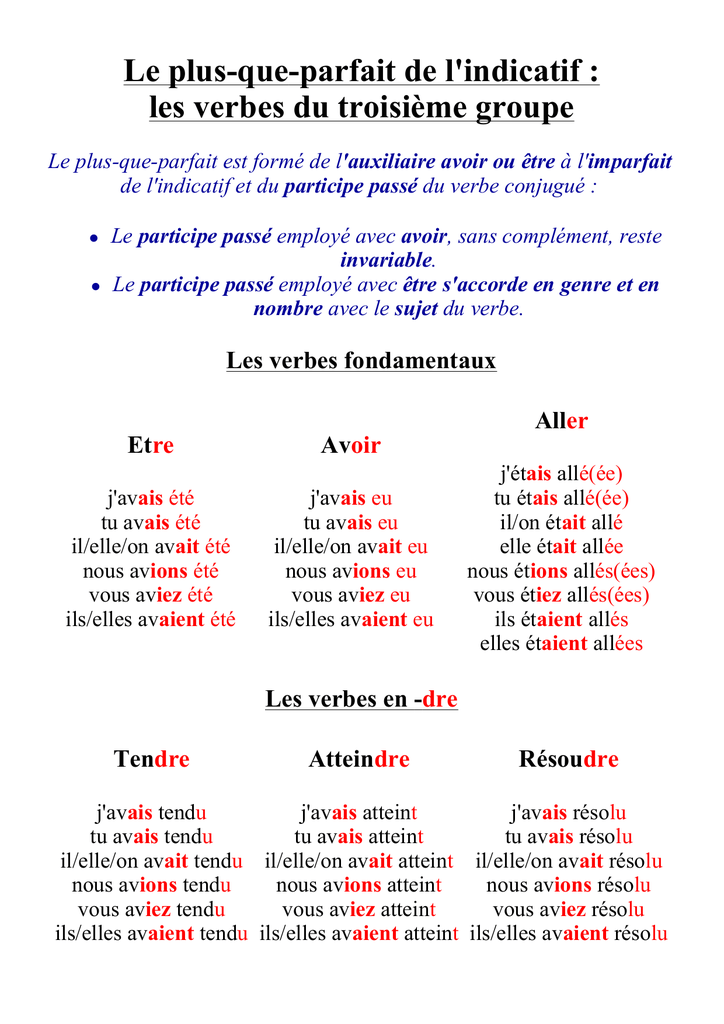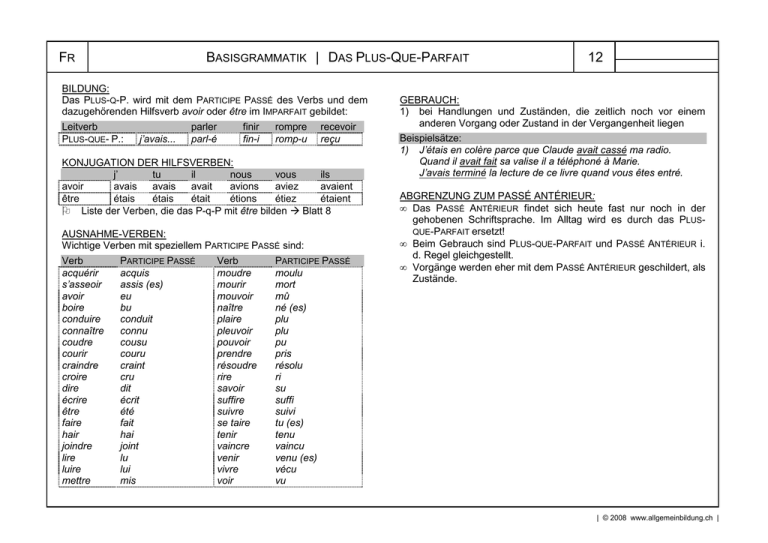

Frequently its use will be signaled by adverbs (such as déjà) which can heighten the sense of opposition between actions: The plus-que-parfait is used when the speaker needs to position one action with respect to another. In both sentences certain actions precede others however, only the second sentence seeks to emphasize the precedence of one action. (The alarm rang, I got up, and I had breakfast.) Compare these two sentences:ġ) Le réveil a sonné, je me suis levé, et j’ai pris mon déjeuner. However, the plus-que-parfait is not always used when one action precedes another for example, a list of actions in chronological order may well be put in the passé composé alone. The term “ plus-que-parfait” suggests “more in the past than the perfect.” The tense is used to indicate actions which took place before another action in the past, which is usually (though not always) described in the perfect ( passé composé). (See Past participle agreement for rules on agreement.) Use (I bought the book that Corinne had recommended to me.) J’ai acheté le roman que Corinne m’avait recommandé.

(She had already left when Philippe arrived.) (He had always wanted to travel in Africa.)Įlle était déjà partie quand Philippe est arrivé. Il avait toujours voulu voyager en Afrique. The plus-que-parfait is a compound tense formed with the imperfect tense of the auxiliary ( avoir or être, see Auxiliaries) and the past participle: Note: The only verb that does not follow the rule for the formation of the imperfect is être (to be), whose imperfect stem is ét‐: j'étais, tu étais, il était, nous étions, vous étiez, ils étaient.Back to INDEX Pluperfect (plus-que-parfait) Formation Note: Falloir (to be necessary) and pleuvoir (to rain) are used only in the il form: il fallait (it was necessary) and il pleuvait (it was raining).

To form the imperfect, simply drop the ‐ons and add the imperfect endings given earlier: The following is a list of the nous form of the most common irregular verbs. Irregular verbs follow the same rules for the formation of the imperfect as do regular verbs. Nous mangions toujours dans ce restaurant.Verbs ending in ‐ger insert a silent ‐e between ‐g and ‐a to maintain the soft g sound in the je, tu, il, and ils forms: Commenciez‐vous à vous inquiéter? (Were you beginning to get worried?).Verbs ending in ‐cer change ‐c to ‐ç before ‐a to maintain the soft c sound in the je, tu, il, and ils forms: The following verbs have spelling changes in the imperfect: In the imperfect, an extra i is necessary in the nous and vous forms: Verbs such as étudier (to study), rire (to laugh), sourire (to smile), and vérifier (to check) already end in ‐ions in the present. Je regardais la télé quand le téléphone a sonné.Pendant mon enfance, je lisais beaucoup.Table 1 shows how the imparfait is formed with regular verbs. The imperfect is formed by dropping the ‐ons ending from the present tense nous form of the verb and adding the following endings: French II: Conditional Mood & Conditions.Using the Correct Form of the Past Tense.Infinitive in Interrogatives Exclamations.

Infinitive Preceded by Adjectives and Nouns.French II: Special Uses of Certain Verbs.French II: Adjectives, Adverbs, Prepositions.Time and Using Advanced Time Expressions.False Friends: French Words in Disguise.


 0 kommentar(er)
0 kommentar(er)
